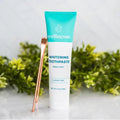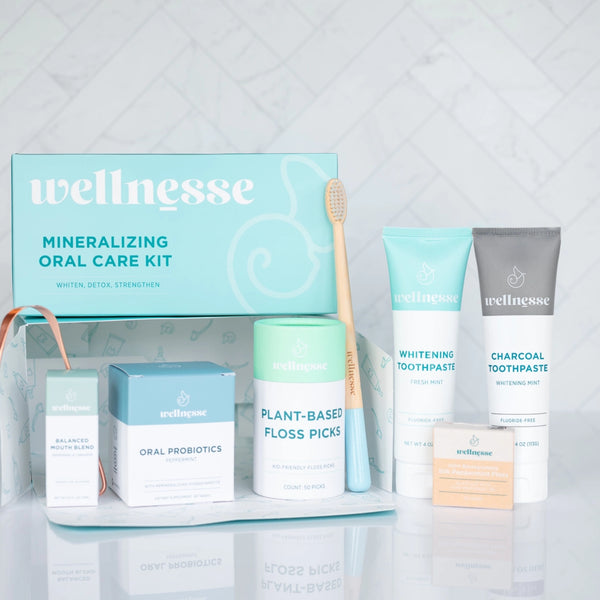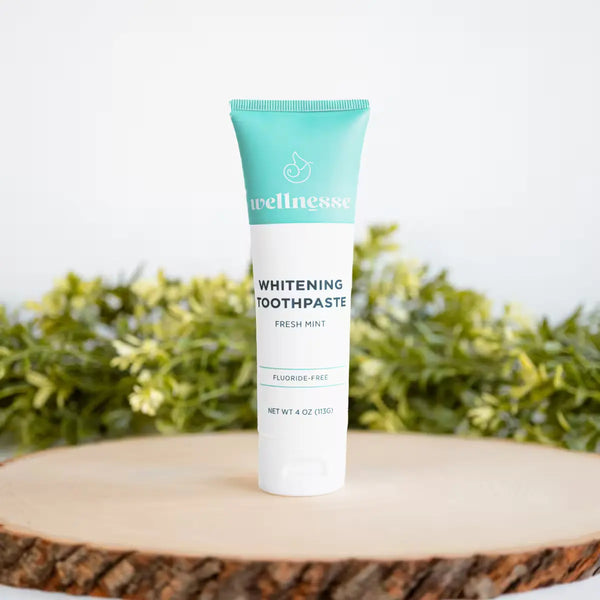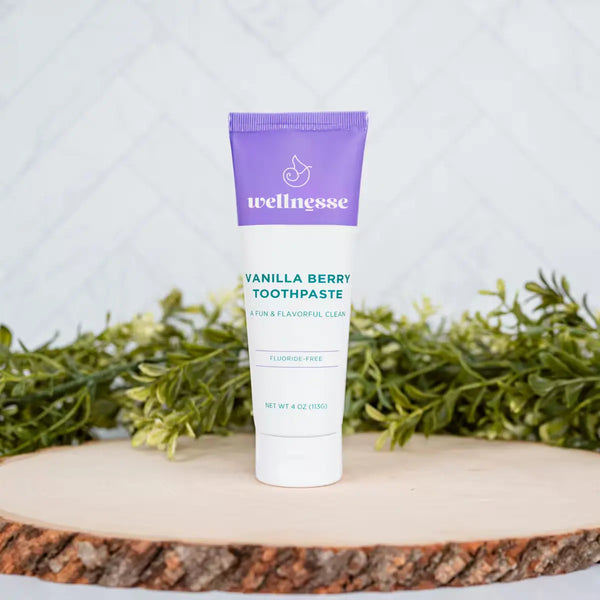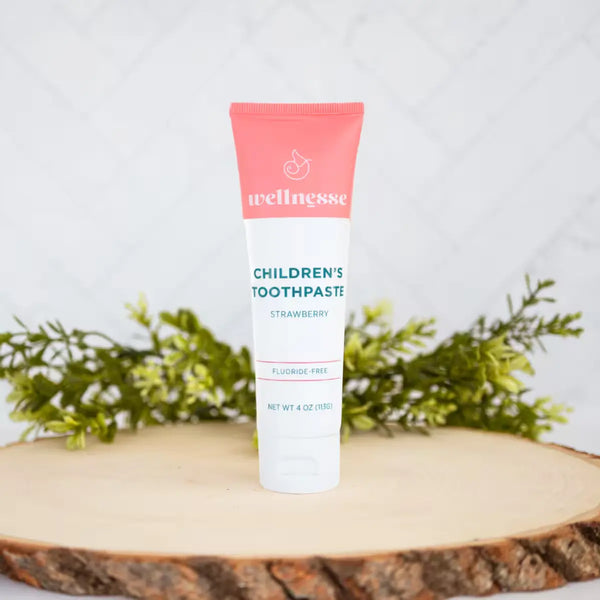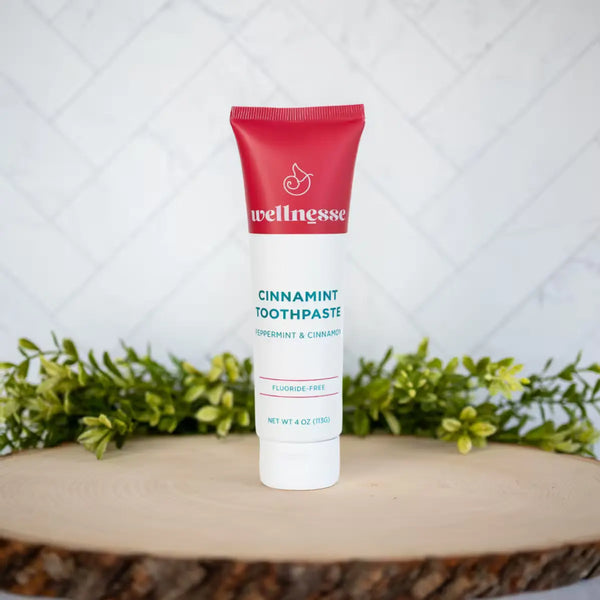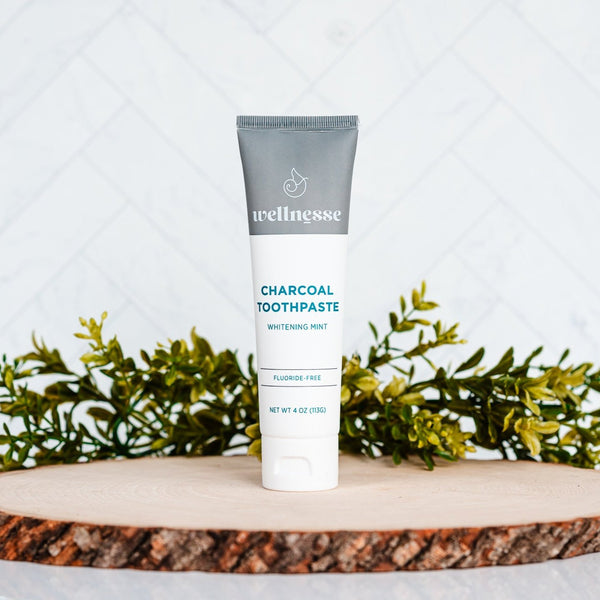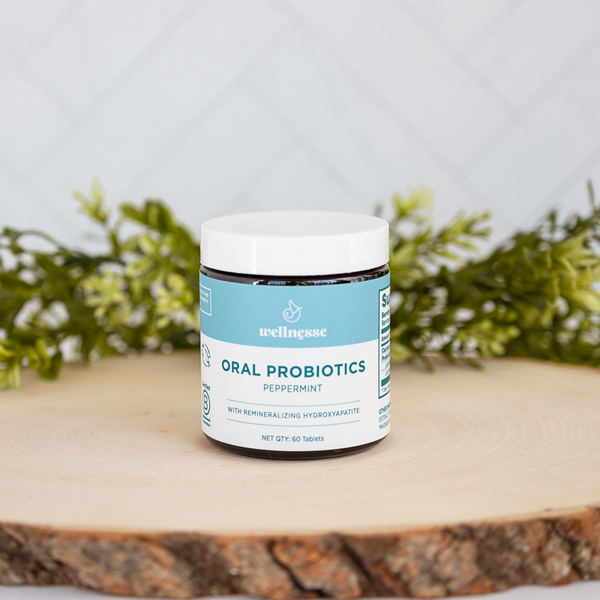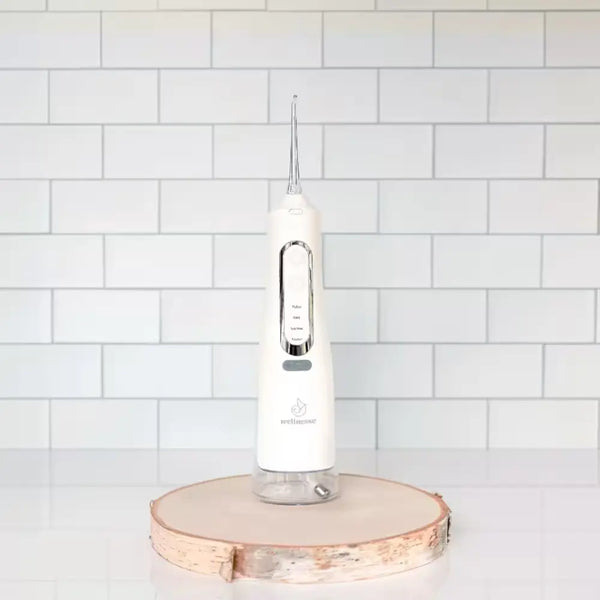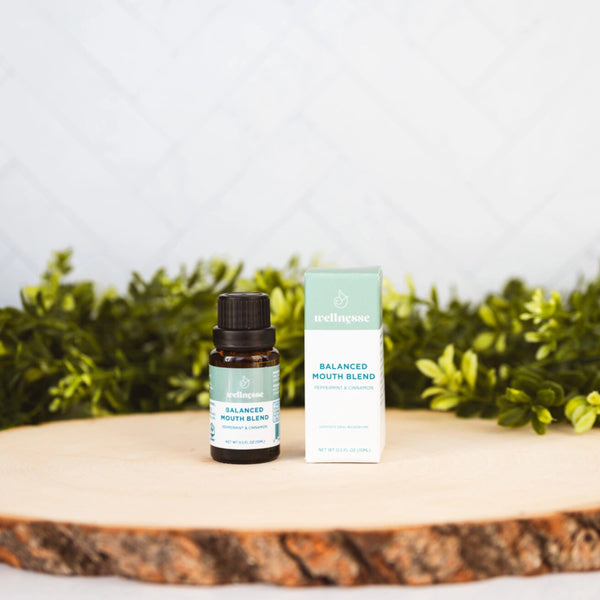In recent years, there’s been a surge of interest in glycerin-free toothpaste options as people seek more natural, healthy toothpaste alternatives for oral care. Traditional toothpastes often contain glycerin, a common ingredient that helps keep the paste moist and smooth. Yet debates have emerged in holistic dental circles about whether omitting glycerin might lead to a clean toothpaste that optimizes tooth remineralization and overall oral health. This article takes a look at what glycerin does in toothpaste, the potential drawbacks of glycerin on teeth, and how going glycerin-free could benefit your smile.
What is Glycerin and Why is it Used in Toothpaste?
Glycerin is a colorless, odorless, sweet-tasting liquid derived from plant oils or animal fats. It’s hygroscopic, meaning it attracts and retains water. In toothpaste formulations, glycerin serves several functional roles that improve the product’s usability and shelf life:
- Moisture Retention: Glycerin acts as a humectant, keeping the paste from drying out in the tube. This ensures your toothpaste stays soft and spreadable over time and maintains a pleasant texture.
- Sweetening: It has a naturally sweet taste, but it isn’t a sugar that oral bacteria can ferment. This helps make toothpaste palatable without using cavity-causing sugars.
- Smooth Texture and Lubrication: Glycerin contributes to the creamy, slick consistency of the paste, so it spreads easily on teeth and gums. This lubricating effect helps the toothpaste coat all surfaces for effective cleaning.
- Stabilization: It also helps stabilize the formula, keeping ingredients evenly mixed and preventing separation. The result is a uniform product where abrasives, fluoride or hydroxyapatite, and other components stay suspended for consistent performance.
One might wonder why anyone would want a non-glycerin toothpaste at all. The answer lies in a few potential downsides that some dentists and consumers have pointed out, which have led certain natural brands to explore alternatives.

Potential Concerns About Glycerin in Toothpaste
Despite glycerin’s usefulness, some oral health enthusiasts question whether it truly belongs in the best natural toothpaste. Some studies and professionals have raised the following concerns:
- Residue and Remineralization: Glycerin’s film might inhibit enamel repair. A thin coating of glycerin on the teeth could theoretically act as a barrier that makes it harder for calcium, phosphate, and fluoride or other remineralizing agents in saliva to reach tooth enamel. Saliva continuously delivers minerals to your teeth to repair early decay, a process called remineralization.
- Trapping Plaque and Bacteria: That same film could also trap food particles or bacteria against the tooth. If plaque bacteria get embedded in a glycerin layer, it might increase the risk of cavities or gum irritation. A toothpaste that’s good for gums would ideally not leave anything behind that feeds or shelters bacteria.
- Gum Irritation or Dry Mouth: Unlike outright harsh chemicals, glycerin isn’t known as an irritant. It’s generally gentle. However, there’s an interesting paradox: in high amounts, glycerin can actually cause dry mouth for some people. Because it’s so hygroscopic, pure glycerin sitting on mucous membranes can draw moisture out. If someone were to use a very glycerin-rich oral product repeatedly without rinsing, it might lead to a drier mouth over time. Dry mouth is problematic because saliva is protective. Less saliva means higher cavity and gum disease risk.
These concerns, especially the idea of inhibited remineralization, have led some consumers to seek out toothpaste without glycerin..
Hydroxyapatite: A Fluoride Alternative for Remineralization
One of the most exciting developments in natural oral care is the use of hydroxyapatite in toothpaste. Hydroxyapatite (HAp) is a mineral form of calcium phosphate, and it happens to make up 97% of tooth enamel and about 70% of dentin in our teeth. It’s the very substance our teeth are built from. In toothpaste form, hydroxyapatite is used as a safe, biocompatible agent to remineralize and strengthen enamel. It essentially supplies the same minerals your teeth need to repair themselves.
Hydroxyapatite was first researched for dental use back in the 1970s. NASA scientists discovered it while trying to help astronauts who were losing bone and tooth density in zero gravity. They developed a synthetic hydroxyapatite to restore minerals to the teeth of astronauts after space missions. The concept proved so useful that by the 1980s, Japanese companies had launched the first hydroxyapatite toothpastes. For decades, HAp toothpaste has been a go-to in Japan and Europe for rebuilding enamel and even stain-removing toothpaste whitening purposes. Only more recently has it started gaining popularity in the U.S. natural toothpaste market.
So how does hydroxyapatite work? When you brush with HAp particles, they can fill in microscopic pits, scratches, and starting-point “microcavities” in the enamel. The nano- or micro-sized particles of hydroxyapatite integrate into the enamel matrix, essentially patching up rough spots with new mineral. This strengthens the tooth surface and helps prevent decay from progressing. It’s a form of guided enamel regeneration on a small scale. A recent clinical study found that a 10% hydroxyapatite toothpaste worked equally as well as a 500 ppm fluoride toothpaste in remineralizing initial caries lesions in children, with no statistical difference in outcomes. The advantages of hydroxyapatite, especially in a natural context, include:
- Non-Toxic and Safe to Swallow: Because HAp is the same mineral our teeth and bones are made of, it’s biocompatible. There’s no concern if a child accidentally swallows some, unlike fluoride, which in large doses can be harmful. Hydroxyapatite has been cleared as safe for use in toothpastes in Japan, the EU, Canada, and other regions. This makes it an attractive active ingredient in the best natural toothpaste brands.
- Broad Oral Health Benefits: Beyond cavity prevention, studies over decades have found that restoring enamel with hydroxyapatite also improves tooth whiteness and gloss, protects against plaque attachment and acid erosion, and even reduces tooth sensitivity.
- Synergy with Glycerin-Free Philosophy: Many of the toothpaste formulas that feature hydroxyapatite also choose to leave out fluoride, detergents like SLS, artificial flavors, and often glycerin. This is partly due to the target audience and partly to ensure nothing interferes with the HAp doing its job. If you have a glycerin-free hydroxyapatite toothpaste, the idea is that the HAp particles have direct contact with your enamel surface, unobstructed by any glycerin layer, so they can integrate more efficiently.
For example, one emerging brand’s product exemplifies this approach: Wellnesse Natural Toothpaste has a clean list of ingredients, and its formula is fluoride and glycerin-free. The Wellnesse brand uses hydroxyapatite for remineralization.

Gentle Whitening and Sensitivity Relief Without Glycerin
Another benefit claimed for glycerin-free formulas is better whitening results. When you remove glycerin, your teeth are able to appear shinier and less dull, and any polishing agents in the toothpaste can work directly on the enamel. More importantly, many glycerin-free toothpastes incorporate alternative whitening strategies that avoid harsh chemicals like peroxide. They rely on gentle abrasives and mineral action, which can be ideal for people with sensitive teeth.
Hydroxyapatite again plays a key role here. Unlike conventional whitening toothpastes that often use high-abrasion silica or peroxide bleaches, hydroxyapatite takes a restorative approach to whitening. It doesn’t bleach stains out. Instead, it fills in the tiny rough spots on your enamel and smooths the surface. A smoother enamel surface reflects light more uniformly, which makes teeth look brighter. Additionally, by reinforcing the enamel, HAp can reduce the visibility of stains and make the tooth color closer to its natural, healthy white. Crucially, this whitening approach is far more suitable for those with tooth sensitivity. If you’ve ever tried a standard whitening toothpaste or strips and felt zings of pain, you’ll appreciate what HAp offers. It’s essentially a sensitive whitening toothpaste, a formula that brightens while actively reducing sensitivity. By filling in tiny exposed dentin tubules, hydroxyapatite blocks the triggers that cause sensitivity to cold, heat, or sweets. Over a few weeks of use, people with chronically sensitive teeth often feel relief as the HAp builds up a protective mineral layer.
Putting it together, a glycerin-free, HAp-infused toothpaste can function as both your daily cleaner and your “treatment” for sensitivity and whitening, all without the need for strong chemicals. For example, brushing with such a paste gives a gentle polishing effect that can remove stains from coffee or tea, yet it doesn’t have the high abrasiveness that some whitening pastes do. The result is essentially a toothpaste for sensitive teeth that also delivers a brighter smile.
Importantly, glycerin-free whitening formulas tend to avoid other harsh ingredients too. Many such products skip hydrogen peroxide and instead use components like baking soda or clay for mild abrasion, charcoal in low quantities, or papain to help with stains gently. They also often include soothing additives to counteract any irritation. The end result is a whitening strategy that’s kinder to your mouth. If you have sensitive gums or teeth, using a mineral-based whitening paste can mean you get a brighter smile without the pain, truly a sensitive toothpaste solution.
Gum Health and the “Clean” Toothpaste Approach
The move toward the best non-toxic toothpaste is often part of a larger shift toward gentler, more natural oral care products that are good for gums. Many ingredients that tend to appear in organic toothpaste brands are chosen for their gum-soothing or antimicrobial properties. At the same time, these products aim to avoid the everyday chemicals that can irritate gum tissue. Common ingredients you’ll find in these toothpastes include:
- Aloe vera: Aloe is known for its soothing, healing properties on skin and tissues. In stain-removing toothpaste, it can help calm any minor gum irritation and has been shown in studies to reduce plaque and improve gum condition, similar to standard mouthwashes.
- Neem: Derived from the neem tree, this time-honored botanical delivers powerful antimicrobial benefits. Neem’s natural compounds inhibit the bacteria responsible for plaque buildup and gingivitis, supporting cleaner, more resilient gums. As an ingredient in healthy toothpaste, neem works to minimize gum swelling and promote a balanced microbiome in the mouth. It’s ideal for people who prefer botanical actives over chemical antiseptics like triclosan. Regular brushing with neem-based products keeps gums firm, pink, and comfortable while helping prevent early signs of gum disease naturally.
- Green tea extract: Rich in polyphenols (like EGCG), green tea is another ingredient found in some toothpaste that's good for gums. Green tea compounds have anti-inflammatory and antibacterial effects in the mouth, which can reduce gingivitis and even help with bad breath.
- Xylitol: Unlike regular sugar, xylitol is a natural sweetener that actively discourages the growth of cavity-causing bacteria. It adds a pleasant taste while reducing the risk of plaque and decay. Xylitol works by preventing harmful bacteria from adhering to the tooth surface, effectively disrupting their feeding cycle. Its use also helps maintain moisture in the mouth, which supports gum comfort and reduces the risk of dry mouth irritation. By swapping glycerin for xylitol, clean toothpaste formulations promote sweetness that supports rather than harms oral health.
- Essential oils and herbal extracts: Clean toothpaste often relies on essential oils like peppermint, spearmint, or clove to refresh breath and discourage microbial growth. These plant-based oils contribute antimicrobial and antifungal activity while lending natural aroma and flavor. For example, clove oil contains eugenol, known for its mild numbing and healing effects on gums. Used in moderation, essential oils keep oral bacteria in check and support a healthy ecosystem within the mouth. Their inclusion ensures freshness and balance, without synthetic flavoring agents or harsh detergents.
All these components contribute to gum health by reducing harmful bacteria, soothing inflammation, and avoiding irritants. When you remove glycerin, it’s one less inert filler, and it makes room for more of these beneficial ingredients.

If you’re looking to simplify and potentially boost the efficacy of your oral care, a glycerine-free toothpaste might be worth adding to your routine. As always, individual results can vary. Some people absolutely love the feel and results of glycerin-free products, while others might miss the familiar slickness or foam of conventional pastes. However, given the strong upside, it’s an option recommended by many holistic dentists and enthusiasts alike. An educated trial is the best way to see if it’s for you.
Sources:
-
Mark Burhenne, DDS – Debunking the Myths and Misconceptions of Glycerin in Toothpaste (Ask the Dentist) askthedentist.com
-
NASA Spinoff – Semiconductor Research Leads to a Revolution in Dental Care spinoff.nasa.gov
